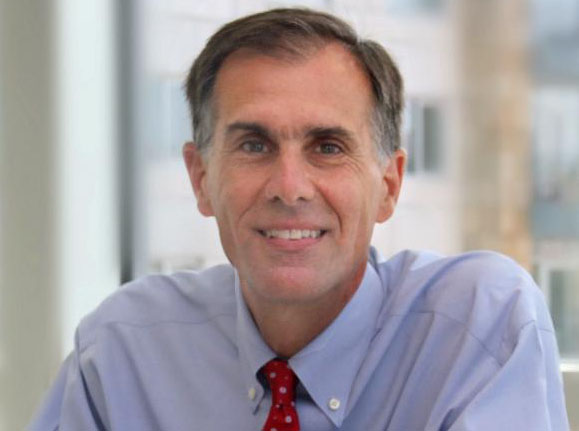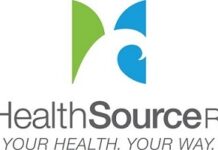
Updated at 10:55 a.m.
Dr. Peter Hollmann has been named academic director of the Executive Master of Healthcare Leadership program at Brown University’s School of Professional Studies. In addition, he is chief medical officer for University Medicine, a Rhode Island-based medical practice with more than 200 physicians. Hollmann, who also maintains a geriatric primary care practice in East Providence, serves as assistant clinical professor in the Department of Family Medicine in The Warren Alpert School of Medicine.
Hollmann talked with Providence Business News about his new position and the Executive Master of Healthcare Leadership program.
PBN: Tell us about the Executive Master of Healthcare Leadership program. When and why was it established?
HOLLMANN: The Executive Master of Healthcare Leadership program prepares professionals to transform health care. Established in 2012, it is one of four executive programs offered by Brown’s School of Professional Studies. EMHL is an intensive, interactive program for highly accomplished professionals who want to advance their careers and have an impact in health care. EMHL meets the needs of those who are navigating a rapidly changing environment where care delivery is changing, treatment options are expanding, payment strategies are evolving and public policy is in flux.
This program leverages Brown’s strength in public health, public policy, health economics and evidence-based medicine and allows students to broaden their perspectives on what’s needed to improve our health care system. During the 16-month program, students attend five residential sessions, study online and earn a master’s degree from Brown University.
PBN: Does the program recruit individuals already working in health care? What kinds of positions will students be prepared for after they complete the program?
HOLLMANN: The Healthcare Leadership program attracts accomplished professionals from across health care – doctors, nurses, hospital executives, insurers, patient advocates, pharmaceutical- and medical-device professionals, consultants, people in legal, regulatory and policy positions, and others in health-related professions. The professional diversity represented in each cohort of students enhances peer-to-peer learning. Students gain a more comprehensive view of health care challenges from each other and are better prepared to create innovative, sustainable solutions. EMHL students hone their leadership skills and develop as strategic thinkers and problem solvers. They are tackling pressing health care and organizational challenges, and are getting impressive results. This positions them well to lead change in their environment.
PBN: How many students are currently enrolled in the program, and do you have plans to expand the size of the student body?
HOLLMANN: EMHL is an intensely personal program. Students develop their leadership capacity and each one completes a Critical Challenge Project – an individual project that focuses on a real, work-related problem and creates direct, tangible benefits for that organization. The current cohort has 14 students who are thriving in a select, highly accomplished group of peers who support and challenge each other to think creatively and to find innovative solutions to difficult problems. In the coming years, we may increase the size of the cohort in a thoughtful way that preserves the quality of the student experience. We are committed to maintaining the highly personal and interactive nature of the program, and to building the community of academics and practitioners who are such a valuable resource for our students.
PBN: You already maintain a more-than-full-time schedule, given your obligations as an administrator, academician and practitioner. How do you envision juggling all of those demands? Do those obligations inform your role at the EMHL program?
HOLLMANN: It’s true, I have a lot on my plate but these are all complementary roles. My work as a clinician and clinical leader gives me a deep understanding of the complexity of care, especially in our changing health care system. I have great empathy for my patients and their families and know that we simply must do better.
In my new role as academic director of EMHL, I have a unique opportunity to help develop the next generation of leaders who will move us closer to the kind of health care system we want – one that addresses quality, access and cost of health care services. I can’t think of a better position to be in. I am surrounded by immensely talented people who have a real commitment to improving our health care system and who are working hard to make that happen. It’s a real privilege to combine my clinical and academic roles and to learn so much from these highly accomplished EMHL students, faculty and alumni.
PBN: What are your top three goals during the next 12-18 months for the EMHL program, and what challenges do you foresee in achieving such goals?
HOLLMANN: The biggest challenge in health care now is responding to the pace of change that will be coming in the next few years. While we anticipate that some positive trends will continue – like the increased focus on patient satisfaction and new ways of delivering health care services – there is a lot of uncertainty about how to pay for health care services in this country. Even with these important questions, the heart of health care remains the same – access, quality and cost are, and will be, the compelling challenges that we must face.
The scope and scale of these challenges make a program like EMHL more important than ever. EMHL brings together knowledgeable, highly motivated professionals who want to make health care better for all of us. For some, this means improving their own companies; for others it means finding creative solutions to system-wide problems like balancing demand and supply in our national blood-supply system, creating new diagnostic approaches or building advanced health care facilities.
My goal for EMHL is to keep it exciting, relevant and high impact. I will be very proud if we continue recruiting outstanding students who apply what they learn in EMHL and make significant improvements to our health care system. I’m very excited about this opportunity to help prepare leaders who will make a difference in health care. I’m also very proud that this program is offered by Brown University.
Nancy Kirsch is a PBN contributing writer.












